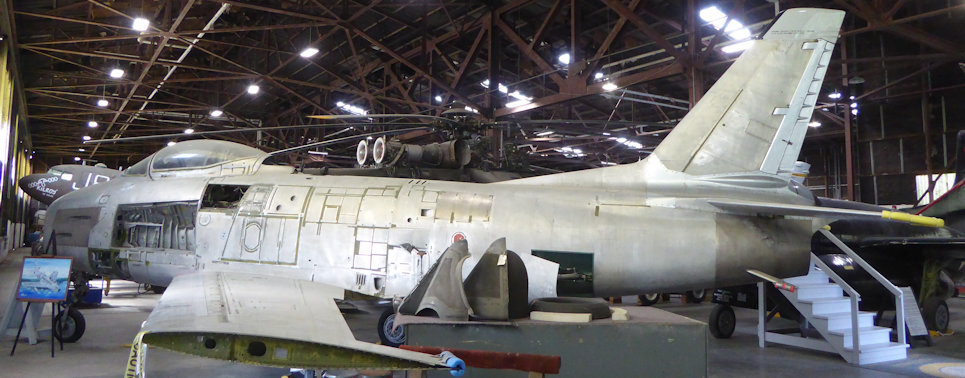

Although there is no formal work program, conservation and restoration of aircraft, engines and other artifacts at the Combat Air Museum continues on several projects. Volunteers have undertaken to adopt projects and the results of past efforts can be seen throughout the two hangars.

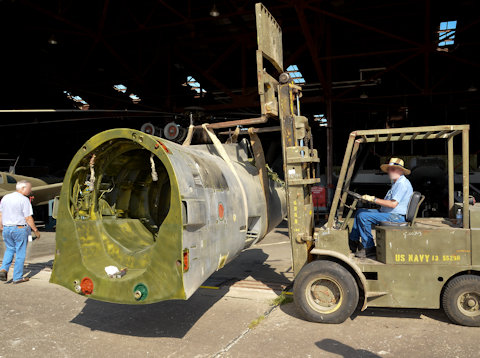

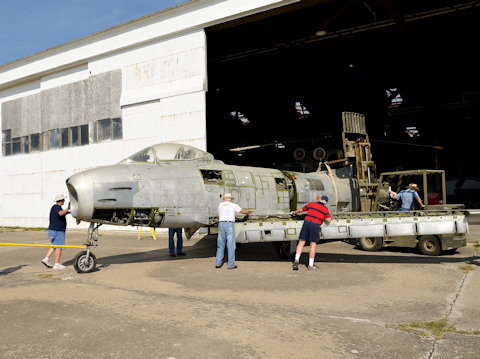
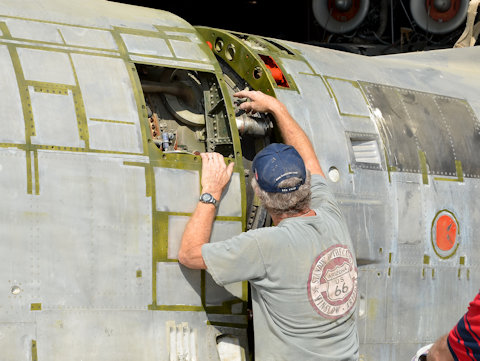

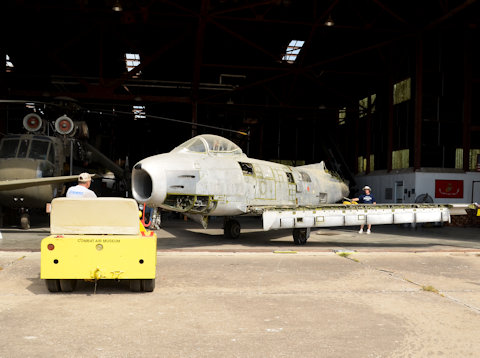
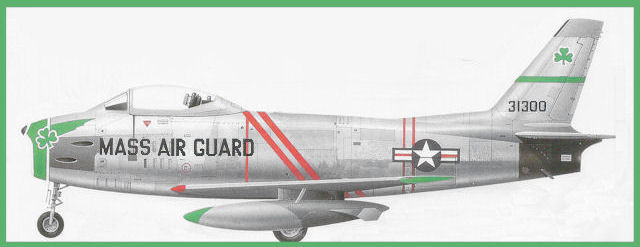
The Combat Air Museum restoration project for the F-86 aircraft in the Museum will be repainted with markings it carried when it flew with the 101st Tactical Fighter Squadron (the Irish Guard), Massachusetts ANG, at Logan Field, (Boston) Massachusetts circa 1962.
The F-86H was the last and most powerful of the Sabre series, representing the developmental limit of this fighter design. It was also the strongest of the F-86s, combining the best features of its predecessors and proved to be a superb fighter-bomber. North American Aviation in Columbus, Ohio (NH) built 473 H-series Sabres.
The F-86H first became operational in the fall of 1954 and five US Air Force Wings flew the type by 1956. Their phase out from the USAF began in 1957, and by year’s end fourteen Air National Guard (ANG) squadrons took on F-86H fighter-bombers. All Sabre types were phased out of the ANG by late 1970.
